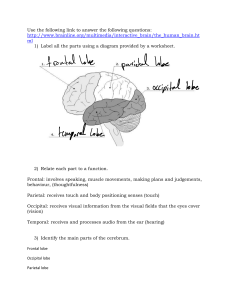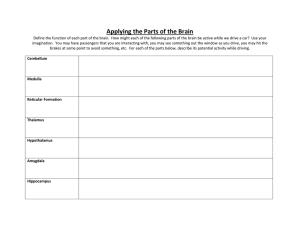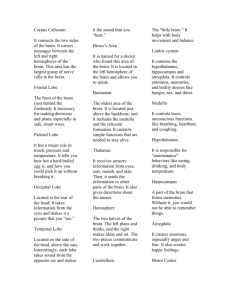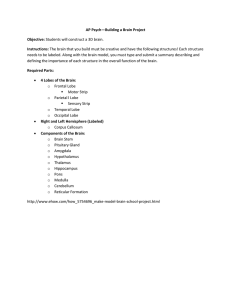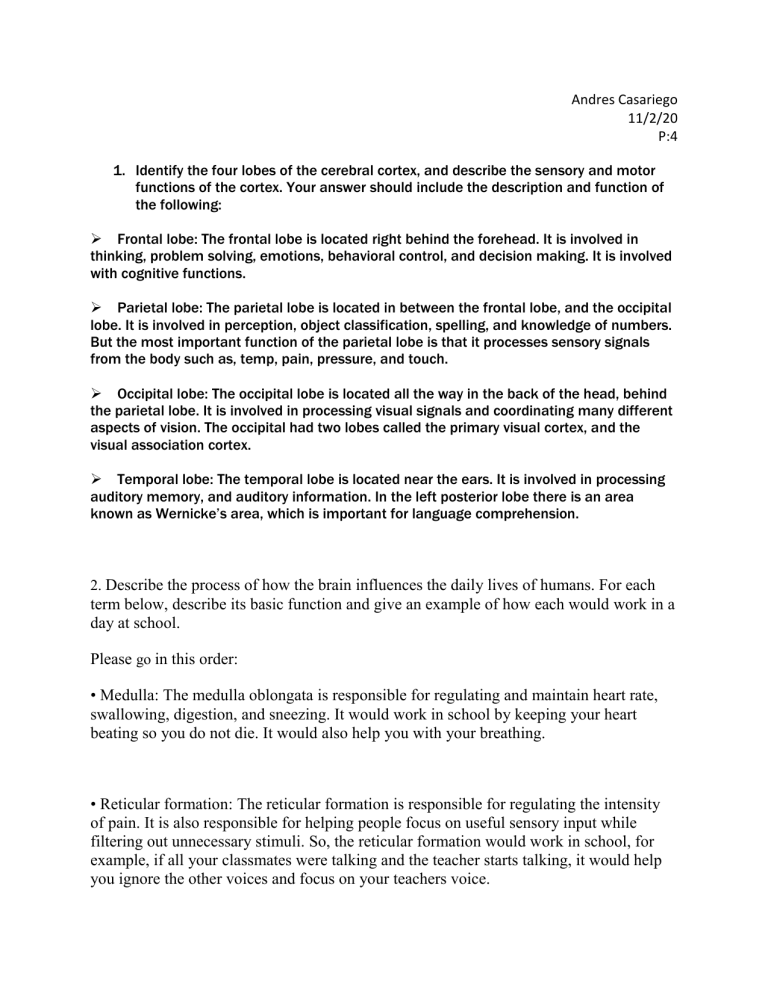
Andres Casariego 11/2/20 P:4 1. Identify the four lobes of the cerebral cortex, and describe the sensory and motor functions of the cortex. Your answer should include the description and function of the following: Frontal lobe: The frontal lobe is located right behind the forehead. It is involved in thinking, problem solving, emotions, behavioral control, and decision making. It is involved with cognitive functions. Parietal lobe: The parietal lobe is located in between the frontal lobe, and the occipital lobe. It is involved in perception, object classification, spelling, and knowledge of numbers. But the most important function of the parietal lobe is that it processes sensory signals from the body such as, temp, pain, pressure, and touch. Occipital lobe: The occipital lobe is located all the way in the back of the head, behind the parietal lobe. It is involved in processing visual signals and coordinating many different aspects of vision. The occipital had two lobes called the primary visual cortex, and the visual association cortex. Temporal lobe: The temporal lobe is located near the ears. It is involved in processing auditory memory, and auditory information. In the left posterior lobe there is an area known as Wernicke’s area, which is important for language comprehension. 2. Describe the process of how the brain influences the daily lives of humans. For each term below, describe its basic function and give an example of how each would work in a day at school. Please go in this order: • Medulla: The medulla oblongata is responsible for regulating and maintain heart rate, swallowing, digestion, and sneezing. It would work in school by keeping your heart beating so you do not die. It would also help you with your breathing. • Reticular formation: The reticular formation is responsible for regulating the intensity of pain. It is also responsible for helping people focus on useful sensory input while filtering out unnecessary stimuli. So, the reticular formation would work in school, for example, if all your classmates were talking and the teacher starts talking, it would help you ignore the other voices and focus on your teachers voice. • Amygdala: The amygdala is involved in processing emotion and survival responses. The amygdala would work in school, for example, if you were running in one direction, and you see a kid in the corner of your eye running right at you coming from the other direction, it would trigger response to get out of his path quickly, before you get hurt. • Hypothalamus: The hypothalamus is involved in regulating basic needs such as hunger, thirst, and temp control. The hypothalamus would work in school, for example, by sending a signal that you are thirsty, and then you would ask the teacher if you could go have a sip of water. • Wernicke's area: Wernicke’s area is involved in processing both spoken and written speech. Wernicke’s area of the brain would work in school, for example, if your teacher asks a question, it will take in and process what the teacher just said. • Broca's area: Broca’s area is involved in moving the muscles to create speech. Broca’s area would work in school, for example, after the teacher askes a question and Wernicke’s area has already processed it, it would then help you speak the answer to the question. • Frontal cortex: The frontal cortex is involved in planning appropriate behavioral responses to external stimuli. The frontal cortex would work in school, for example, if your friend asks you a question nicely, it will help you answer back to him nicely and not screaming at him.
